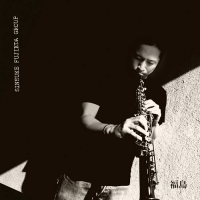Home » Jazz Articles » Album Review » Louis Sclavis Quartet: Silk and Salt Melodies
Louis Sclavis Quartet: Silk and Salt Melodies
Retitled from Atlas Trio to Louis Sclavis Quartet, the clarinetist and sometimes soprano saxophonist once again focuses exclusively on the wooden reed instrument but, if returning keyboardist Benjamin Moussay and guitarist Gilles Coronado continue to explore broader textures with effects and/or electronic instruments, there are less sonic extremes and more emphasis on natural timbres on Silk and Salt Melodies; even when Coronado employs a touch of distortion or a bit of reverb, it's more restrained, making the record feel more intrinsically organic. The addition of Chemirani provides a more decided pulse that frees his newfound quartet mates from having to pull double or triple duty, though every member of the group still helps propel the music forward, whether it's through Sclavis' serpentine melodies on tracks like the Middle Eastern- inflected opener, "Le parfum de l''éxil," or the similarly labyrinthine, more Indo-centric "Sel et Soie," where the composer delivers his most exhilarating bass clarinet solo of the set, driven by the remarkably expansive colors of Chemirani's zarb, a Persian goblet drum also known as tombak, donbak , dombak or tompak.
Some composers write for the specific musicians in a group; others write music and then search for the right musicians to interpret it. In Sclavis' case, he's been on both sides of the table, but with Atlas Trio and now Louis Sclavis Quartet it's clear that his writing is intended to exploit the unequivocal strengths of his band mates and their growing chemistry. Following Sclavis' aforementioned impressive work on "Sel et Soie," Coronado takes a solo that clearly wears the influence of Bill Frisell on his sleeve in terms of sparsity, texture and a sublime interlocking of linear phrasing with shifting harmonies, but speaks with his own voice in the less idiosyncratic, more direct approach to creating melodies that are filled with both surprise and persistent beauty. A zarb/guitar duet opens "Dance for Horses" on a more angular note, made all the more appropriate when Sclavis and Moussay enter for one the album's knottiest thematic constructs.
Sclavis' quartet has plenty of harmonic options available, given the chordal nature of two of its instruments, and the clarinetist isn't averse to exploring such opportunities—Moussay's pianistic support of Sclavis' solo on "Dance for Horses" being redolent of Oregon, quite paradoxically, at its most oblique and lyrical, before the pianist takes a more driving solo bolstered by Coronado's gradually intensifying and overdriven supporting lines and Chemirani's increasingly thrusting rhythms. Still, an overriding interest in Central Asia means that Silk and Salt Melodies relies heavily on linearity. Between the two, however, it's a heady mix that allows for music that is, in turns, unrelentingly potent and gently atmospheric.
If Sclavis' career has been marked by an ongoing desire for evolution, growth and change, it's all the more remarkable, then, that he continues to put out album after album of perpetually excellent music, performed by largely unknown musicians who regularly beg the question "where does he find them?" Whatever the answer, with Silk and Salt Melodies, Sclavis has once again delivered an outstanding album where unfettered expressionism finds the perfect meeting place with structural constructs that continue to surprise and delight.
Track Listing
Le parfum de l’éxil; L’homme sud; L’autre rive; Sel et soie; Dance For Horses; Des feux lointains; Cortège; Dust And Dogs; Prato plage.
Personnel
Louis Sclavis
woodwindsLouis Sclavis: clarinet; Gilles Coronado: guitar; Benjamin Moussay: piano, keyboard; Keyvan Chemirani: percussion.
Album information
Title: Silk and Salt Melodies | Year Released: 2014 | Record Label: ECM Records
Tags
PREVIOUS / NEXT
Support All About Jazz
 All About Jazz has been a pillar of jazz since 1995, championing it as an art form and, more importantly, supporting the musicians who make it. Our enduring commitment has made "AAJ" one of the most culturally important websites of its kind, read by hundreds of thousands of fans, musicians and industry figures every month.
All About Jazz has been a pillar of jazz since 1995, championing it as an art form and, more importantly, supporting the musicians who make it. Our enduring commitment has made "AAJ" one of the most culturally important websites of its kind, read by hundreds of thousands of fans, musicians and industry figures every month.




















